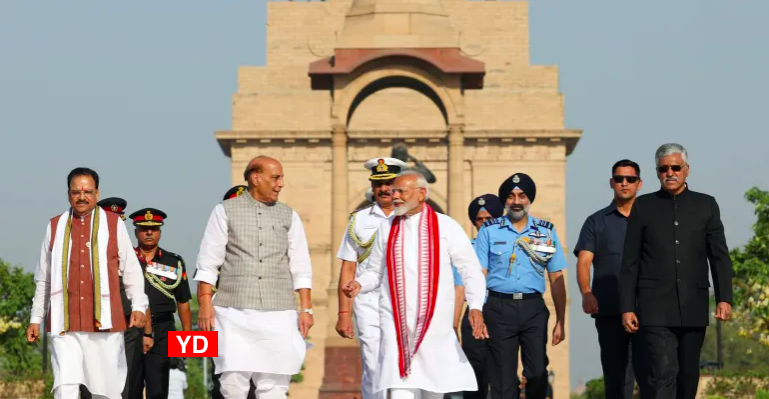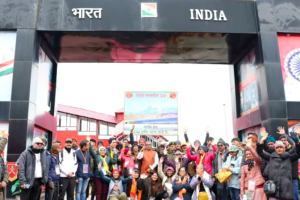The decisive retaliatory strikes undertaken by the Indian Armed Forces under Operation Sindoor over the last few days, which underscored the country’s growing military prowess, played a significant role in both India and Pakistan announcing a ceasefire late Saturday afternoon, that sources said has been reached firmly on New Delhi’s terms.
The cessation of hostilities was implemented at 5 PM on Saturday, hours after India demolished eight Pakistani air bases, eliminated over 100 high-value terrorists, and inflicted significant damage on Pakistan’s terror infrastructure and military support assets.
Crucially, the ceasefire came not through a negotiated settlement or involvement of any third party, but after Pakistan found itself incapable of sustaining further escalation, say sources.
“Over the last few days, as we have all seen, Pakistan has suffered very heavy and unsustainable losses, after it has given us an unprovoked attack on our installations. It has suffered losses both on land and in air. There has been extensive damage to the crucial Pakistani air bases like Skardu, Sargodha, Jacobabad and Bholari. In addition, a loss of AD weapon system and radars made the defence of Pakistani airspace untenable,” said Wing Commander Vyomika Singh.
The outreach from Pakistan’s Director General of Military Operations (DGMO) to his Indian counterpart was a direct consequence of India’s show of force and resolve. New Delhi’s doctrinal shift — declaring that any future act of terror will be treated as an “act of war” — redefined the framework of engagement as it was formally acknowledged by Washington and left Pakistan with virtually no options.
It has also been made clear that the current announcement, reached without any preconditions, only relates to stoppage of all firing and military action, thus not affecting at all New Delhi’s decision to suspend the Indus Waters Treaty (IWT), the closure of Attari Integrated Check Post in Punjab or the cancellation of the SAARC Visa Exemption Scheme for Pakistani nationals.
India agreed to cease hostilities only after securing a position of dominance. The understanding, reached through a direct DGMO-level conversation, applies strictly to halting military action across land, air, and sea. No broader dialogue or issue was tabled or agreed to in the initial engagement, and no political-level talks were part of this specific ceasefire mechanism, sources detailed.
However, diplomatic engagement on the global stage was not absent. In a notable development, US Secretary of State and Vice President Vance revealed that Washington had held intensive discussions with senior officials on both sides, including External Affairs Minister (EAM) S. Jaishankar, National Security Advisor (NSA) Ajit Doval, and Pakistan’s Army Chief Asim Munir. The US confirmed that it had encouraged restraint and, significantly, applied pressure on Pakistan to de-escalate.
With Operation Sindoor, India has shifted the strategic equation and displayed that it no longer absorbs terrorism as a cost of geography. It retaliates with precision, sets the rules of engagement, and forces de-escalation only after asserting deterrence. This ‘ceasefire’ is not a truce — it is a statement of control.
As EAM Jaishankar said after both countries reached an understanding on stoppage of firing and military action, “India has consistently maintained a firm and uncompromising stance against terrorism in all its forms and manifestations. It will continue to do so”.

























Add Comment